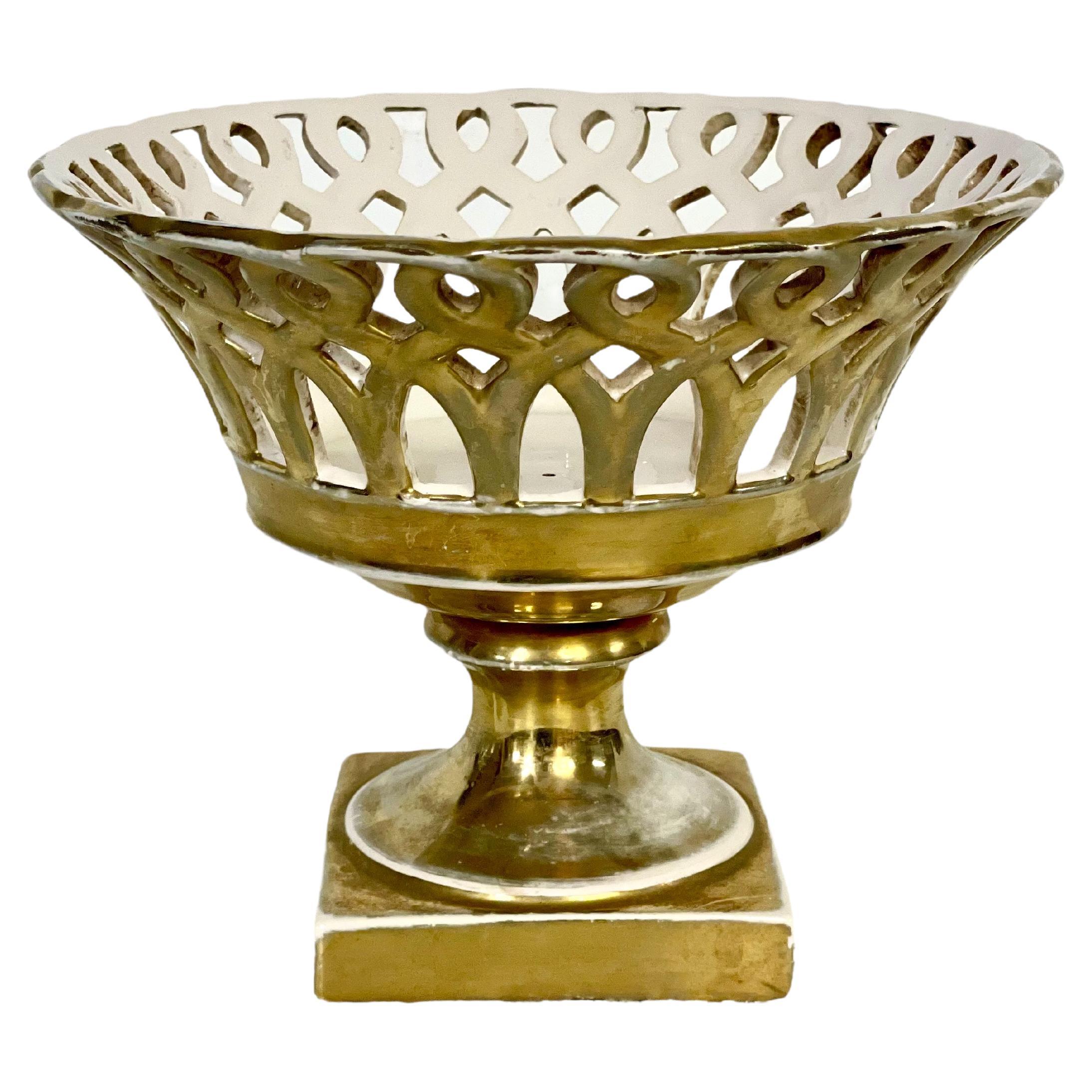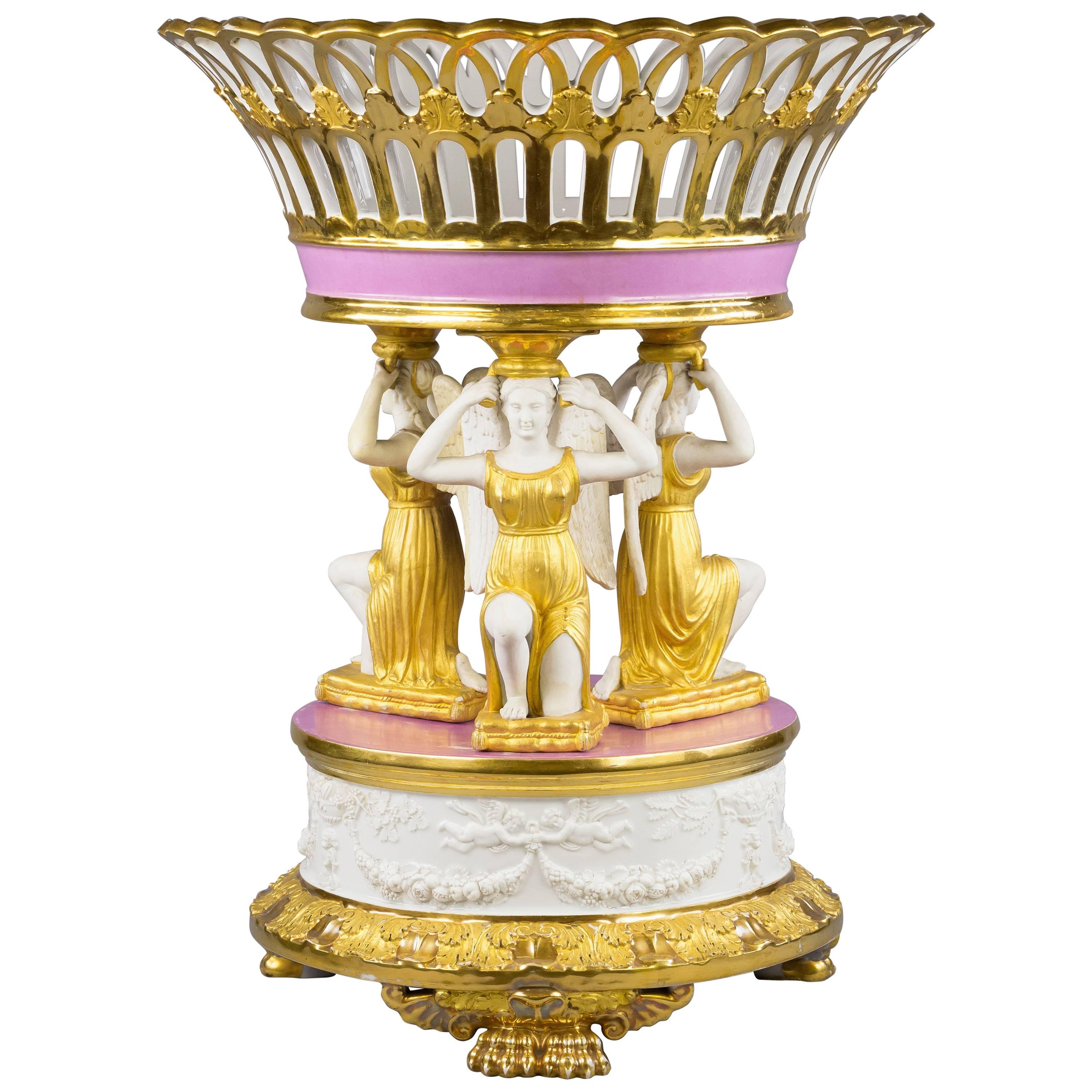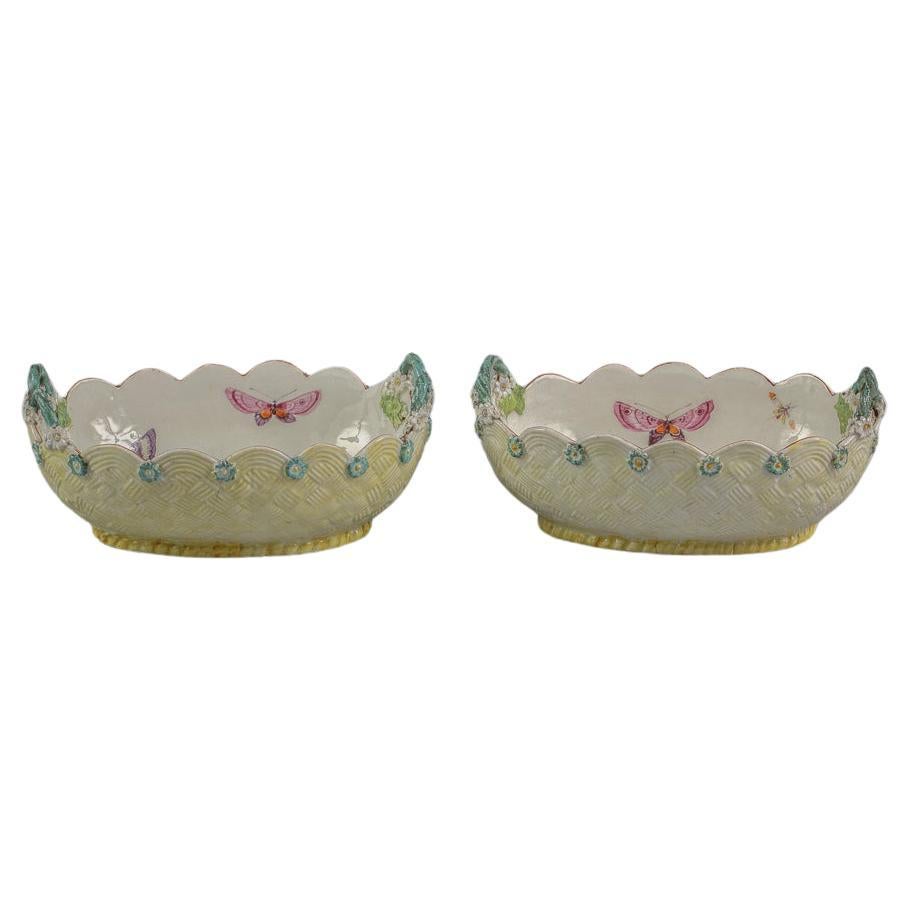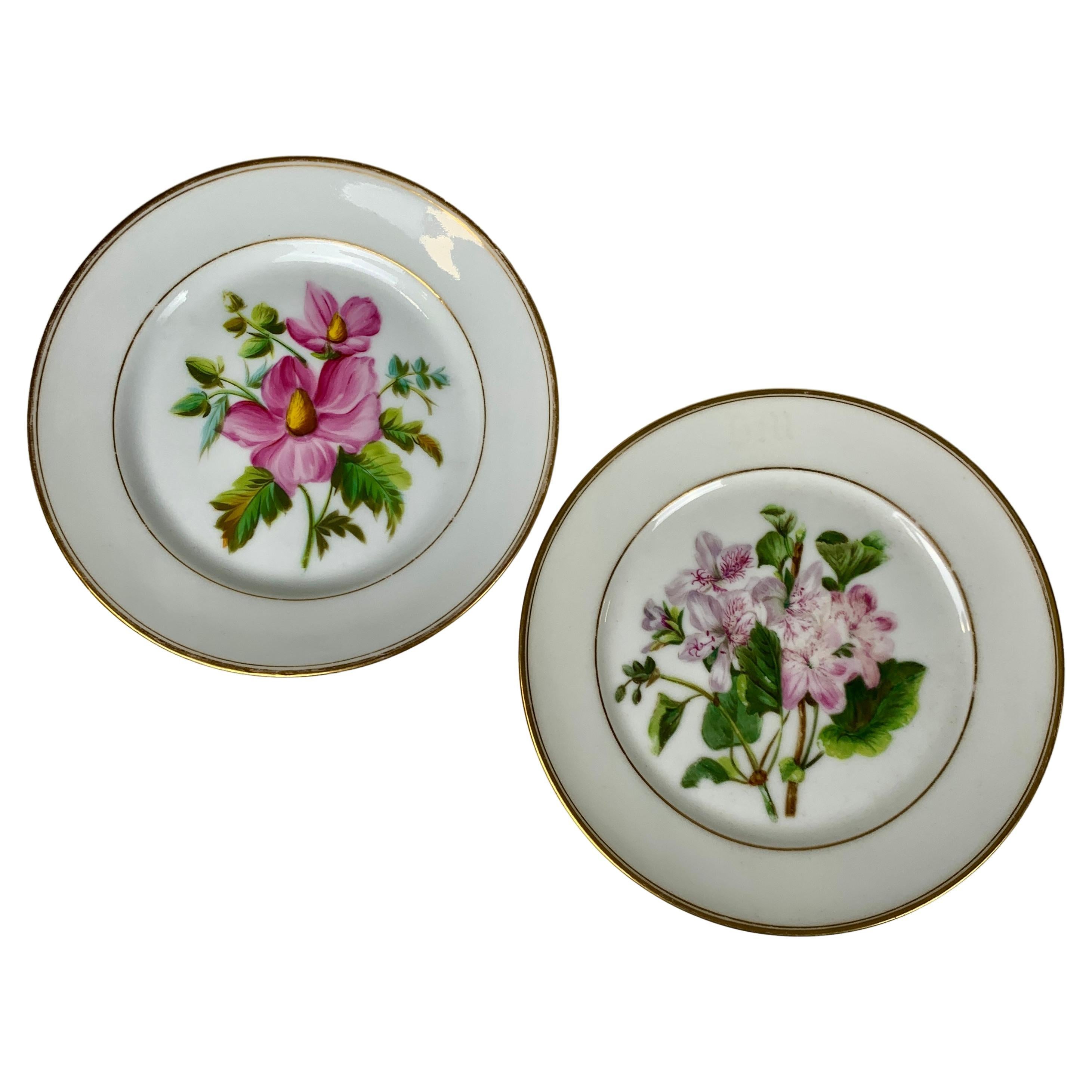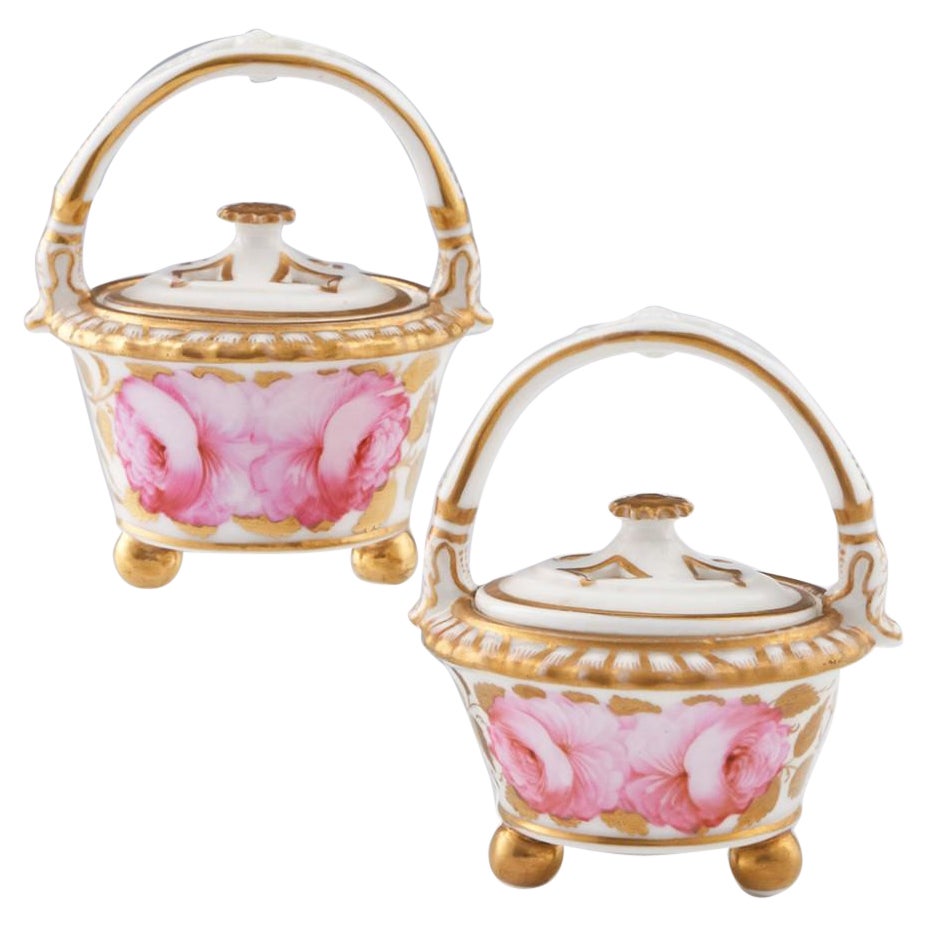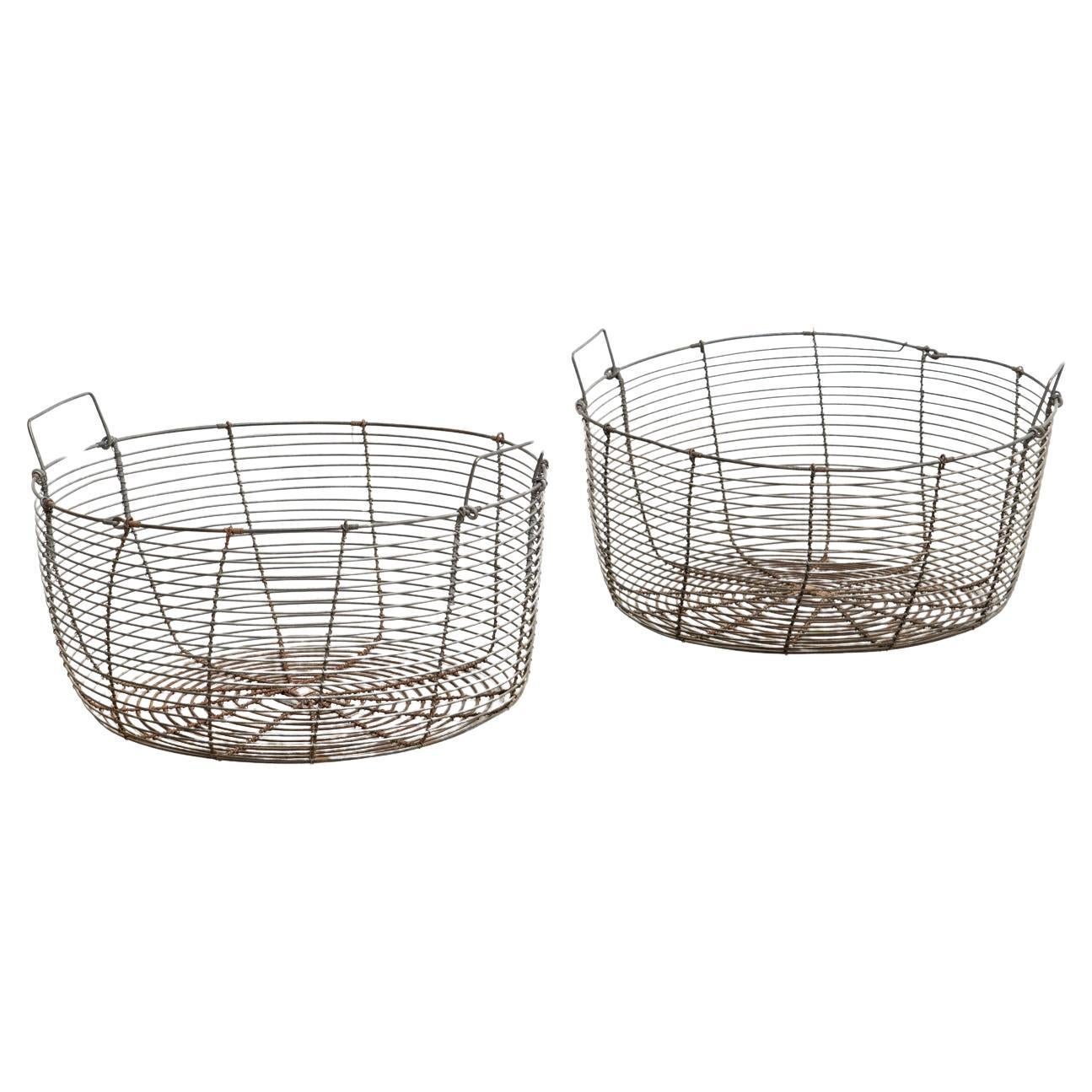Items Similar to Pair of Paris Porcelain Figural Baskets, circa 1840
Want more images or videos?
Request additional images or videos from the seller
1 of 7
Pair of Paris Porcelain Figural Baskets, circa 1840
About the Item
Pair of Paris porcelain figural baskets, circa 1840.
- Dimensions:Height: 12 in (30.48 cm)Diameter: 9.5 in (24.13 cm)
- Materials and Techniques:
- Place of Origin:
- Period:
- Date of Manufacture:circa 1840
- Condition:
- Seller Location:New York, NY
- Reference Number:
About the Seller
5.0
Recognized Seller
These prestigious sellers are industry leaders and represent the highest echelon for item quality and design.
Established in 1940
1stDibs seller since 2015
154 sales on 1stDibs
Typical response time: 18 hours
- ShippingRetrieving quote...Ships From: New York, NY
- Return PolicyThis item cannot be returned.
More From This SellerView All
- Large Paris Porcelain Centrepiece Basket, circa 1840Located in New York, NYLarge Paris porcelain centrepiece basket, circa 1840.Category
Antique 1840s French Decorative Baskets
MaterialsPorcelain
- Pair of English Porcelain Baskets, Derby, circa 1760Located in New York, NYDecorated with butterflies, insects and cherries on the interior, with a yellow ground basket weaved decoration on the exterior.Category
Antique 1760s English Decorative Baskets
MaterialsPorcelain
- Pair of Large Paris Porcelain Vases, circa 1840Located in New York, NYOn a sky blue ground, the gilding finely tooled.Category
Antique 1840s French Vases
MaterialsPorcelain
- Royal Copenhagen Porcelain Figural Tazza, circa 1820Located in New York, NYRoyal Copenhagen porcelain figural tazza, circa 1820.Category
Antique 1820s Danish Centerpieces
MaterialsPorcelain
- Large Paris Porcelain Centerpiece Bowl, circa 1880Located in New York, NYWith three gilt border oval panels painted with fruit, flowers and foliage with alternating gilt scrollwork all on a ruby ground.Category
Antique 1880s Decorative Bowls
MaterialsPorcelain
- Pair of Paris Porcelain Two Handled Vases, circa 1840Located in New York, NYPair of Paris porcelain two handled vases, circa 1840.Category
Antique 1840s English Vases
MaterialsPorcelain
You May Also Like
- 19th Century Paris Porcelain Basket VaseBy Porcelaine de ParisLocated in LA CIOTAT, FRA stunning openwork corbeille, or basket vase, dating from the early 19th century Empire Period, beautifully crafted from Old Paris Porcelain and richly gilded all over its delicatel...Category
Antique Early 19th Century French Empire Decorative Baskets
MaterialsPorcelain
- Pair of Paris Porcelain Botanical Dishes Painted by Feuillet, Circa 1850By Jean-Pierre FeuilletLocated in Katonah, NYThis pair of Paris porcelain botanical dishes each show a single exquisite plant with purple-pink flowers. The dishes were made by Feuillet and retail...Category
Antique Mid-19th Century French Napoleon III Decorative Dishes and Vide-...
MaterialsPorcelain
- A Pair of Spode Porcelain Violet Baskets, c1820By SpodeLocated in Tunbridge Wells, GBA Pair Of Spode Porcelain Violet Baskets, c1820 Additional information: Date : 1815-1822 Period : George III- George IV Marks : Painted marks Spode 3286 Origin : Stoke-on-Trent, Eng...Category
Antique 19th Century English George III Decorative Baskets
MaterialsPorcelain
- Pair of Rustic Metal Basket, circa 1940Located in Barcelona, BarcelonaPair of Metal basket made by welded wire completed by a solid ring. Unknown manufacturer, France, Circa 1940 Materials: Metal In original condition, with minor wear consistent of...Category
Vintage 1940s French Mid-Century Modern Decorative Baskets
MaterialsMetal
- Two Pairs of Italian Maiolica Baskets, circa 1780By Antonio FerrettiLocated in Milano, ITTwo pairs of maiolica baskets Antonio Ferretti Manufacture Lodi, circa 1770-1790 Maiolica polychrome decorated “a piccolo fuoco” (third fire). Measures: A) Height 3.54 x 6.69 x 9.84 in (9 x 17 x 25 cm); B) Height 3.93 x 7.48 x 11.02 in (10 x 19 x 28 cm). Total weight 4.85 lb (2.200 kg) State of conservation: A) One of the smaller baskets has some areas of restoration, the other slight chipping from use; B) One of the larger baskets is intact and the other shows a clearly glued break. The mold with which the baskets were forged simulates a wicker weave. The two larger works have high, vertical walls, with branch-shaped handles penetrating the weave. The painted decorations, small polychrome flowers applied only externally, highlight the points where the weaves intersect. The decision to leave the center of the basket devoid of decoration is highly unusual, but given the size and complexity of the shape, as well as the quality of the enamel, it is possible to hypothesize that it represents a precise choice in manufacturing or for a particular client. The two smaller baskets have small, twisted handles and, on the outside, reproduce more decisively the characteristic wicker weave, obtained through thin molded lines. The interior exhibits a rich, typical decoration of naturalistic flowers: a bunch centered around a main flower and secondary stems accompanied by small “semis”. The exterior of these works is also adorned with small little flowers where the weaves intersect. The size and morphological characteristics of the baskets confirm their attribution to the Lodi factory of Antonio Ferretti between 1770 and 1790, during its most successful period; by this point his original reworking of the "Strasbourg" decoration, known as "old Lodi", had achieved great fame even outside Italy. This decorative choice represented a strong point of the Lodi factory, which established itself thanks to the vivid nature of the colors made possible by the introduction of a new technique perfected by Paul Hannong in Strasbourg and which Antonio Ferretti introduced in Italy. This production process, called “piccolo fuoco” (third fire), allowed the use of a greater number of colors than in the past; in particular, the purple of Cassius, a red made from gold chloride, was introduced. Its use allowed for many more tones and shades, from pink to purple. The Ferretti family had started their maiolica manufacturing business in Lodi in 1725. The forefather Simpliciano had started the business by purchasing an ancient furnace in 1725 and, indeed, we have evidence of the full activity of the furnaces from April of the same year (Novasconi-Ferrari-Corvi, 1964, p. 26 n. 4). Simpliciano had started a production of excellence also thanks to the ownership of clay quarries in Stradella, not far from Pavia. The production was so successful that in 1726 a decree of the Turin Chamber came to prohibit the importation of foreign ceramics, especially from Lodi, to protect internal production (G. Lise, La ceramica a Lodi, Lodi 1981, p. 59). In its initial stages, the manufacture produced maolicas painted with the “a gran fuoco” (double fire) technique, often in turquoise monochrome, with ornamentation derived from compositional modules in vogue in Rouen in France. This was also thanks to the collaboration of painters like Giorgio Giacinto Rossetti, who placed his name on the best specimens next to the initials of the factory. In 1748 Simpliciano made his will (Gelmini, 1995, p. 30) appointing his son Giuseppe Antonio (known as Antonio) as universal heir. After 1750, when Simpliciano passed away, Antonio was directly involved in the maiolica factory, increasing its fortunes and achieving a reputation on a European level. Particularly important was the aforementioned introduction in 1760 of the innovative “a piccolo fuoco” (third fire) processing, which, expanding the ornamental repertoire with Saxon-inspired floral themes, could commercially compete with the German porcelains that had one of its most renowned offerings in the naturalistic Deutsche Blumen. Antonio Ferretti understood and promoted this technique and this decoration, proposing it in a fresher and more corrective version, less linked to botanical tables...Category
Antique 1770s Italian Neoclassical Ceramics
MaterialsMaiolica
- First Period Worcester Porcelain Large Pair of Openwork Fruit BasketsBy 1st Period Worcester Dr. WallLocated in Downingtown, PAFirst Period Worcester porcelain large pair of openwork fruit baskets, Printed "Pine Cone" pattern, Circa 1770-1775. The large reticulated bask...Category
Antique Late 18th Century English Georgian Serving Bowls
MaterialsPorcelain
Recently Viewed
View AllMore Ways To Browse
Pairs Of Wire Or Metal Baskets
Pair Paris
Pair Figural
Paris Kitchen
Porcelain Figural
Antique Paris Porcelain
Antique Porcelain Basket
French Baskets Pair
French Figural Porcelain
Pair Of Porcelain Baskets
Paris Porcelain Basket
Basket Bin
Handwoven Baskets
Chinese Basket Handle
Baskets And Bins
Modern Waste Basket
Used Metal Bins
Antique Wood Buckets
